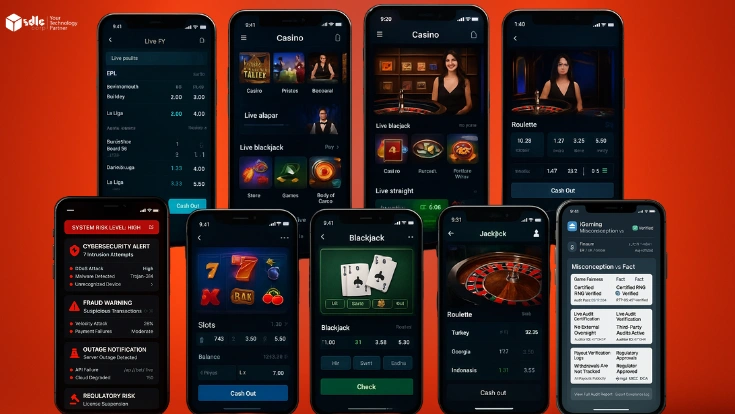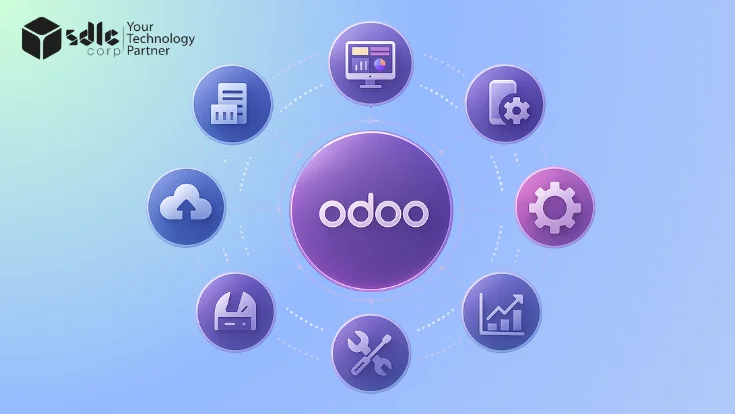Introduction
Food delivery apps are now a daily ssential, offering quick ordering, real-time tracking, and reliable delivery. Jahez stands out with its smooth customer journeys, efficient restaurant tools, and streamlined rider operations. Many businesses today want to know the actual cost to build an app like Jahez and what factors influence that investment.
This guide provides a clear, short breakdown of the costs, features, and technology needed to build a scalable Jahez-style food delivery app.
How Jahez Works and Why It Performs Well
Building a Jahez-like app is a smart move in today’s digital-first food economy. Here’s why:

High Market Demand: Food delivery is booming, with billions in global revenue and growing user adoption.
Multiple Revenue Streams: Earn through delivery fees, commissions, ads, and premium plans.
Scalable Model: Easily expand to groceries, pharmacy, or parcel delivery under one platform.
Strong User Engagement: Features like real-time tracking and loyalty rewards drive retention.
Data-Driven Growth: Gain insights on user behavior to optimize marketing and operations.
Main Modules Required to Build an App Like Jahez

A. Customer App

- Provides browsing, ordering, payment, and live tracking. A simple design keeps users engaged and reduces confusion.
- Fast menu loading and clear filters improve food selection and help users place orders quickly.
- Push notifications keep customers informed throughout the delivery journey.
B. Delivery Agent App

- Riders receive order assignments with clear instructions, helping them complete deliveries efficiently.
- Route guidance supports accurate navigation, reducing delays and failed deliveries.
- Earnings and activity summaries provide full visibility into income and performance.
C. Restaurant Partner Panel

- Restaurants update menus, track orders, and manage preparation times in real time. This improves kitchen coordination and reduces errors.
- Orders appear in sequence, helping staff prioritise tasks effectively.
- Sales and payout summaries support better planning and business decisions.
D. Admin Dashboard

- Admins manage restaurants, customers, riders, and service zones from one central panel.
- Real time insights highlight issues such as delays or failed orders, helping teams respond quickly.
- Controls for commissions, refunds, promotions, and system adjustments help maintain smooth operations.
Cost Breakdown by App Complexity
Let’s break down the cost estimate for a Jahez-style app in USD based on the app’s complexity:
| Tier | MVP Version | Mid-Level Version | Full-Scale Platform |
|---|---|---|---|
| Cost | USD 15,000 – USD 30,000 | USD 30,000 – USD 60,000 | USD 60,000 – USD 120,000 |
| Timeline | 6–8 weeks | 3–4 months | 5–7 months |
| Core Features |
|
|
|
| Ideal For | Validating the idea in one city. | Growing across key urban areas. | Scaling nationwide delivery operations. |
Explore new blog on – What Does It Cost to Build a Super App?
Factors Influencing the Development Cost

- Feature Depth
- Advanced features like loyalty, referrals, and zone pricing increase development effort.
- Real-time ETAs and automated routing add technical complexity.
- Focusing on essentials first helps control cost and timeline.
- Advanced features like loyalty, referrals, and zone pricing increase development effort.
- Design Quality
- Clean UI improves user flow and reduces confusion.
- Multi-language screens enhance accessibility.
- Consistent design builds trust across all apps.
- Clean UI improves user flow and reduces confusion.
- Technology Choices
- Flutter reduces cost with a single codebase.
- Native apps offer better performance but cost more.
- Scalable backends ensure smooth growth under high load.
- Flutter reduces cost with a single codebase.
- Team Expertise
- Experienced teams deliver stable and reliable apps.
- Experts in delivery systems work faster and smarter.
- Strong expertise minimizes delays and rework.
- Experienced teams deliver stable and reliable apps.
- Security and Compliance
- Secure payments increase user trust.
- Encryption and safe authentication reduce risks.
- Strong security boosts overall platform credibility.
- Secure payments increase user trust.
Tech Stack Required for an App Like Jahez
The right technology stack ensures your app is scalable, secure, and high-performing.

1. Frontend Technologies
Flutter
React Native (Ideal for cross-platform mobile app development)
2. Backend Technologies
Node.js
Python (Powerful for handling business logic and API integrations)
3. Database Options
MongoDB
PostgreSQL (Support for both structured and flexible data storage)
4. Payment Gateways & APIs
Stripe
Razorpay
Tabby API (Facilitate seamless checkout and split payments)
5. KYC/AML Verification Tools
Onfido
ShuftiPro (Used for automated identity checks and compliance requirements)
Revenue Models for an App Like Jahez

1.Order commissions
2.Delivery fees
3.Paid restaurant placements
Subscription plans
5. In-App Ads (Google AdMob or Native Banner Ads)
In-app advertising through platforms like Google AdMob can be integrated to show relevant food or delivery-related ads. Native banner ads can also be displayed in non-intrusive areas of the app.
Why Work With SDLC Corp
How to Choose the Right Development Partner
Selecting the right app development partner is one of the most critical decisions that will determine the success of your Jahez-like app. Here’s what you should evaluate:
Relevant Experience:
Select a team with a proven track record in food delivery or on-demand app development.End-to-End Services:
Go for an agency that handles everything — design, development, testing, and maintenance.Modern Tech Stack:
Ensure they use scalable technologies like Flutter, Node.js, Firebase, and AWS.Clear Communication:
Look for partners offering regular updates, timelines, and access to tools like Jira or Trello.Post-Launch Support:
Ensure ongoing support for bug fixes, updates, and OS compatibility.Client Feedback:
Check reviews on Clutch or GoodFirms and speak to past clients.Legal Safety: Demand proper NDAs and full IP rights for your project.
Conclusion
Building an app like Jahez requires careful planning, reliable order management, real-time delivery tracking, and a scalable backend. Development costs typically range from USD 15,000 to USD 120,000, depending on features and scale. With the right team and execution, your platform can expand across cities and compete with leading on-demand delivery apps. Ready to get started? Contact us for expert guidance and turn your Jahez-like app idea into a scalable solution.
FAQ'S
How much does it cost to build an app like Jahez?
The cost to build an app like Jahez typically ranges from USD 15,000 to USD 120,000, depending on features, design quality, technology stack, and whether you plan for a single-city launch or a multi-city platform.


















